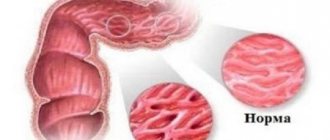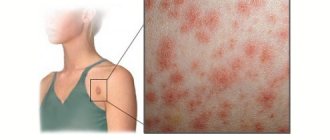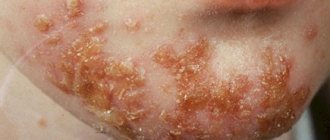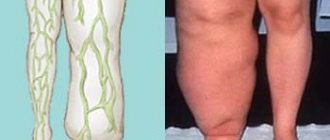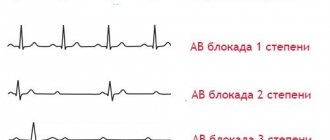Hemophilia is a disease characterized by mutations in genes that regulate blood clotting. In a person suffering from this pathology, it manifests itself in the form of two factors, which can be spontaneous or indirect:
- hemorrhages in muscles, internal organs (including the brain), joints;
- bleeding lasting up to 5 hours.
The disease has been known to mankind since at least the 2nd century BC. Even though there were no scientific works describing what hemophilia is then, there is documentary evidence of the death of several boys, the cause of which was bleeding after circumcision. The concept of hemophilia was first proposed in 1828, and in 1874 the disease was described in detail.
Hemophilia is inherited, with women only being carriers of the gene, and men showing all the symptoms. This is because the hemophilia gene is recessive and is found on the X chromosome. For the disease to manifest itself in women, a mutation is required on both X chromosomes. This is impossible: in female carriers, the recessive gene is suppressed by the dominant gene on the second X chromosome. If a woman becomes pregnant with a female fetus with mutations in both chromosomes, a miscarriage occurs.
This does not happen in men: they inherit a mutant X chromosome, but there is no dominant gene on their Y chromosome to suppress the recessive one.
The most famous carrier can be called Queen Victoria of England, and the most famous patient is her great-grandson, Russian Tsarevich Alexei.
However, this does not mean that women cannot suffer from hemophilia. If a man with hemophilia and a carrier woman decide to have a child, the child is equally likely to be:
- carrier girl;
- a girl with symptoms of hemophilia;
- a boy suffering from hemophilia;
- a healthy boy.
Only 60 women with hemophilia have been described in medicine. In addition, the development of hemophilia type C does not depend on gender.
Causes of the disease
What is hemophilia and how is it transmitted? The absence in the body of an enzyme that affects the ability of blood to clot is inherited. The manifestation of hereditary diseases is possible only if there are hemophiliacs in the family. It should be borne in mind that only men are susceptible to manifestations of hemophilia. This means that women can only be “healthy” carriers of the gene. In this case, the disease will be inherited from a healthy mother to children. The causes of hemophilia are explained by a chromosomal abnormality.
Unlike diseases of internal organs or neurological abnormalities, a violation of the blood clotting process affects the entire body. Hemophilia is a type of hereditary disease that is transmitted on the X chromosome. A hereditary genetic anomaly is transmitted from a mother or father to a male child along with a dominant trait. During the development of a female fetus with hemophilia, a miscarriage occurs during the formation of the internal circulatory system (approximately 4 months).
This is the reason why there are no female hemophiliacs.
There is a certain probability of genetic combinations in which a child inherits a disease:
- Healthy father + mother is a carrier of the gene. In such a marriage there is a 25% chance of having a healthy or sick son, a healthy daughter or a daughter of a gene carrier.
- Hemophiliac father + healthy mother. At the birth of children, all sons will be healthy, and all daughters will be carriers of the gene.
- Father is hemophiliac + mother is a carrier of the gene. The probability of having a healthy son is 25%. With the same chance, the birth of a sick son or daughter who is a carrier of the gene is possible. It is impossible to get a healthy girl from marriage without a genetic disorder.
Despite the fact that, according to scientists, women do not suffer from hemophilia, in medicine there are several cases of manifestations of blood clotting disorders in women. The most famous is Queen Victoria, who ruled England in the late 19th century. Queen Victoria is believed to have developed hemophilia due to a chromosomal mutation after birth, and there have been no confirmed cases of the bleeding disorder in the family. Also in medicine, cases are described when hemophilia as a disease is diagnosed in girls born as a result of close relatives. But such cases are more likely a medical anomaly or unsubstantiated rumors.
Questions and answers
Is it possible to be completely cured of hemophilia?
Drug therapy and blood or plasma transfusion procedures relieve acute pathology syndromes. Sometimes patients are prescribed long-term use of medications selected based on medical history. But completely eliminating the symptoms of hemophilia remains impossible.
Does hemophilia pose a threat to a child's life?
If parents seek medical advice in a timely manner, the baby will be out of danger. A quick correct diagnosis and initiation of treatment will allow the child not to limit himself in physical activity and games.
Can a boy with hemophilia pass it on to his sons?
The risk of having children with hemophilia from a father with bleeding problems is minimal. The disease will be inherited by sons only if their mother is one of the carriers of the altered gene.
Symptoms
People with hemophilia may not experience much discomfort or symptoms with good supportive care. Parents can notice many signs of the disease in their baby even in infancy or childhood.
As a rule, a medical examination, clinical tests and diagnosis of the disease are carried out in the first months of the baby's life.
The main symptoms of hemophilia are as follows:
- Babies experience bleeding and bruising when teething.
- The first sign of problems with blood clotting is excessive bleeding from the slightest injury or cut. For example, if a child hits or injures the skin during active games.
- In hemophilia, symptoms are accompanied by bruises that do not go away for a very long time. In some cases, bruises remain on the body for months, become inflamed and filled with pus.
- Any surgical procedure, even ordinary ones, causes severe bleeding that does not go away for a long time.
- Nosebleeds for no apparent reason.
- Bleeding may occur inside muscles and joints, and blood may appear in the urine.
Being susceptible to injury and blood loss does not necessarily mean that a person has hemophilia. Problems and disruptions in the blood clotting process can be a consequence of many diseases or side effects of certain medications. The appearance of clinical symptoms characteristic of hemophilia is the reason for a thorough examination and identification of the cause of the ailment.
Symptoms of hemophilia
The first and main sign of the disease is bleeding, which can be observed in different age groups. The following symptoms are also characteristic of this disease:
- recurrent nosebleeds;
- detection of blood elements in urine and feces;
- extensive hematomas formed after minor injuries;
- continuous bleeding resulting from tooth extraction or injury;
- Hemarthrosis (intra-articular bleeding) causes blood to flow into the joints, causing limited mobility and swelling.
Symptoms of the disease in childhood
Severe hemophilia develops in children during the first year of their life. Symptoms characteristic of it are the following:
- bloody discharge from the umbilical wound;
- hematomas, which, initially having a point nature, spread to different parts of the body and are localized both subcutaneously and on the mucous membranes;
- bleeding that occurs after preventive vaccinations and other injections.
In addition to the above signs of the disease, in children starting from 2-3 years of age, symptoms such as articular ones, as well as small capillary hemorrhages (petechiae), which form for no reason during slight physical exertion, can be observed. Hemophilia in children from 4 years of age to school age is often presented by:
- recurrent nosebleeds;
- discharge from the gums;
- periodic presence of blood in the urine (hematuria), the level of which is above the normal threshold;
- extensive bruises (hemarthrosis), the development and long course of which contributes to the appearance of chronic contractures, arthropathy, as well as synovitis;
- detection of blood elements in the child’s stool, indicating the initial stage of progressive anemia;
- progression of bleeding localized in internal organs;
- possible hemorrhages inside the brain, threatening severe damage to the central nervous system. Children with this complication are characterized by decreased appetite, thin physique and lack of discipline.
Symptoms of hemophilia in children
Such children may develop mild but prolonged bleeding that occurs after intramuscular injections. Therefore, they are recommended to be vaccinated and administered medications subcutaneously using a thin needle.
The danger of the disease, in addition to impaired hemostasis, consists of possible complications:
- leukopenia;
- hemolytic anemia;
- disabling renal failure;
- thrombocytopenia.
Due to the low immune response of the body that developed as a result of this disease, children with hemophilia often develop various types of complications with age.
Symptoms of the disease in women
Although the incidence of hemophilia in girls and women is extremely low, it is not completely excluded. Its course is mild, and the most common symptoms of the disease are as follows:
- heavy menstrual flow;
- bleeding that occurs after removal of the tonsils or tooth;
- nosebleeds;
- von Willebrand disease, causing causeless episodic bleeding.
Symptoms of the disease in men
Hemophilia under a microscope
In adulthood, the disease only progresses. In addition to the signs of the disease already present since childhood, new symptoms are added to it, causing much more harm to the body:
- retroperitoneal bleeding. Their development provokes the appearance of acute diseases of the peritoneal organs, which can only be resolved surgically;
- the formation of bruises, indicating both subcutaneous and intramuscular hemorrhages. Their danger lies in the compression of the vessels feeding the tissue, which leads to tissue necrosis. There is also a risk of blood poisoning due to infection;
- posthemorrhagic anemia caused by nasal, gastrointestinal bleeding, bleeding from the gums, as well as urinary canals;
- hemorrhages in bone tissue, leading to its necrosis;
- gangrene and possible paralysis resulting from giant hematomas;
- bleeding of the mucous lining of the throat and larynx. May occur when the vocal cords are tense, as well as coughing;
- joint hemorrhages contribute to the progression of osteoarthritis, ultimately leading to disability. The reason for this is limited joint mobility and atrophy of the muscles of the limbs.
To perform surgery, such patients are pre-administered antihemophilic drugs to avoid large blood loss.
Severity of the disease
The first signs of hemophilia should alert parents. A medical examination is usually carried out immediately to establish a diagnosis. Before the age of 3 years, children may experience motor dysfunction. This occurs due to the occurrence of hemorrhages in the joints. Symptoms may change with age.
Depending on how often and severely the disease manifests itself, doctors divide three forms of severity of the disease:
- The mild form does not cause any particular inconvenience to the patient and does not aggravate the condition with painful symptoms. Bleeding disorders are noticeable with significant trauma, bruises, cuts or surgery.
- Moderate hemophilia usually appears in childhood. You can notice symptoms in a child after active games (bruises, hematomas, etc.). Also, if you are injured, extensive bleeding may occur.
- The severe form of the disease is usually diagnosed in infancy. To display characteristic symptoms (blood clotting disorders, hematomas, bruises, etc.), it is enough for the baby to actively crawl on the floor or play with toys.
Forecast
Replacement therapy allows the patient's body to produce a sufficient amount of antibodies that block procoagulant activity. Additional measures to support boys or men include plasmapheresis and the use of immunosuppressants. Against the background of regular blood and plasma transfusions, patients may encounter HIV, hepatitis, herpes or cytomegalovirus.
Mild hemophilia does not have a significant impact on the quality and life expectancy of patients. In severe forms of the pathology, the survival prognosis is significantly worse. Clinical guidelines for hemophilia include regular consultation of patients with a hematologist and monitoring of blood clotting parameters through laboratory tests.
Types of hemophilia
Medicine distinguishes three types of disease. The main difference in the form of the disease is due to a deficiency of a certain type of blood clotting factor. Each type of hemophilia has its own characteristics in treatment and maintenance therapy:
A) The most common type of disease. According to various sources, type A occurs in 70–88% of hemophilia patients. There is a deficiency of β globulin protein (VIII) in the patient's blood. This type of disease increases the risk of heavy bleeding during surgery or injury.
B) Type B disease occurs in 9–20% of patients. At the same time, the patient is confirmed to have a deficiency of another enzyme - the α globulin protein (Christmas factor). The symptoms of type A and type B diseases are very similar and are considered classic.
C) The third type of disease is very rare, occurring in approximately 1–2% of patients. There is a deficiency of γ globulin protein (factor XI) in the patient's blood. The deviation can occur in both men and women. The clinical manifestations of this type of disease vary significantly. Therefore, type C was excluded from the classification.
Treatment of hemophilia
Treatment of hemophilia
Unfortunately, this disease is incurable in our time; you can only carry out maintenance therapy and control periodically occurring symptoms. It is advisable to treat hemophilia in clinics specializing in this disease. In this case, the patient must have a “Hemophilia Patient Book”. It must contain information about the patient’s blood group, his Rh factor, type of disease and severity.
Treatment of the disease must begin, first of all, by determining its type. Further therapy is based on the introduction of missing clotting factors into the blood. They are obtained by collecting donor blood, as well as the blood of animals raised in certain conditions specifically for these purposes. But here it is important to prevent an overdose of the factor, since it can lead the patient to anaphylactic shock. Thus, the calculation should be carried out as follows: no more than 25 ml of clotting factor per 1 kg of patient weight, administered within 24 hours.
As a result of such treatment, the disease recedes for a short time, as the quantitative indicators of the elements missing for successful hemolysis are normalized. This helps prevent the development of blood loss and minimizes negative consequences.
During bleeding, based on the type of disease, doctors provide the following treatment:
- for type A disease, a transfusion of dry plasma, antihemophilia plasma, and fresh plasma transferred directly from the donor is performed;
- for type B disease, the patient is given a concentrate of the missing clotting factor, as well as fresh frozen donor plasma;
- for type C disease, it is necessary to administer dry fresh frozen plasma.
Further treatment of the disease is symptomatic:
Symptomatic treatment of hemophilia
- in case of joint hemorrhages, it is important to cool the sore joint by applying a cold compress, as well as immobilize it with a plaster splint for up to 3-4 days, and remove the consequences using UHF technology;
- restoration of the musculoskeletal system affected by the disease is carried out using physiotherapy, as well as achilloplasty and the synovectomy method;
- uncomplicated bleeding is best treated with complete rest and keeping the patient cool;
- capsular hematomas are removed surgically with parallel treatment with antihemophilic concentrates;
- Treatment of external bleeding is carried out under anesthesia. The patient's wounds are cleaned of blood clots, washed with an antibacterial solution, and then bandaged with blood-stopping agents;
- for hemophilia, treatment should include following a diet consisting of foods rich in vitamins A, B, C and D, as well as microelements (calcium, phosphorus), you can eat peanuts.
The most important thing when fighting a disease is prevention. Thus, families in which women have a mutated gene or men are diagnosed with this disease are not recommended to have children naturally. If a healthy woman is carrying a child from a male carrier of the disease, then at a period of 8 to 14–16 weeks after determining the sex of the baby, if it is a girl, it is recommended to terminate the pregnancy to prevent the spread of this pathology. The only way out here is to carry out the IVF procedure, carried out under certain conditions.
People with hemophilia are recommended from an early age to avoid various types of trauma; they are prohibited from engaging not only in physical labor, but also from participating in traumatic sports, such as hockey, boxing, football, etc. Of the sports disciplines, only swimming is allowed.
It is advisable to carry out preventive injections of the missing factors, but you should not often use painkillers, as addiction develops, and the body will not be able to cope with the pain on its own in the future.
With this disease, it is strictly forbidden to take blood-thinning anti-inflammatory, antipyretic and other drugs, such as Indomethacin, Aspirin, Butazolidine, Brufen, Aspirin, etc.
By carrying out prevention and treatment, hemophilia can be partially neutralized, but it is not yet possible to completely get rid of its manifestations. But people with a similar diagnosis, if they follow the instructions of a hematologist, as a rule, live to old age.
If you think you have Hemophilia
and symptoms characteristic of this disease, then a hematologist can help you.
Source
Did you like the article? Share with friends on social networks:
Diagnostics
Diagnosis of blood incoagulability begins with a clinical analysis and coagulogram. If hemophilia is suspected, differential diagnosis with other diseases is carried out. Blood clotting decreases with anemia, disseminated intravascular coagulation syndrome, chronic leukemia, etc.:
- The duration of bleeding and the process of blood clotting. The first indicator for a genetic disorder is normal, and the clotting time is above 10 minutes.
- Thrombin time and prothrombin index indicators will be prolonged.
- Determination of the level of proteins involved in the blood clotting process. The level of β globulin (VIII), α globulin (Christmas factor) or γ globulin (factor XI) in hemophiliacs is 50 percent or more below normal.
Diagnosis of pathology
Diagnostic procedures are performed by doctors of several specializations: neonatologist, pediatrician, geneticist and hematologist. For concomitant pathologies, consultation with a gastroenterologist, orthopedist, otolaryngologist and neurologist may be required.
At-risk couples should visit a doctor before conceiving a child. Molecular genetic research of biomaterials from future parents will allow us to take into account the risk of having a child with hemophilia. After conception, prenatal screenings may be performed. Their results will confirm or refute the fact that the child inherited hemophilia.
Neonatal tests performed in the first days of a baby’s life are no less effective. A coagulogram provides the neonatologist with comprehensive information about the production of coagulation factors by the newborn’s body.
In case of hemarthrosis, the child is prescribed an X-ray examination of the joints. Ultrasound diagnostics is performed when signs of internal bleeding and retroperitoneal hematomas are detected.
Treatment
With all the variety of medications and scientific research presented by modern medicine, treatment for hemophilia is impossible. In the media you can find references or even advertisements for hemophilia vaccinations, but such drugs do not exist. Treatment is prescribed to maintain the patient's health and to prevent complications.
In severe cases, the patient must be treated only in a hospital, under the strict supervision of medical staff:
- For hemophilia A, treatment begins with IVs containing blood clotting factor (CRYOPRECIPITATE).
- If the patient begins to experience extensive bleeding, he is prescribed a transfusion of donor blood plasma.
- Surgery is prescribed only in the absence or ineffectiveness of other treatment methods. If a surgical operation is necessary, the patient is prepared using a prothrombin complex.
- For hemophiliacs, the content of a protein that affects blood clotting is increased through the administration of drugs based on donor blood or synthetic substitutes. The clotting factor is maintained at 30–50%. With a higher content of clotting proteins, there is a risk of thromboembolism.
Treatment of consequences caused by bleeding disorders is carried out locally to eliminate hemorrhage and generally strengthen the condition. According to medical statistics, there are about 400 thousand people on the planet suffering from hemophilia. Treatment of this disease is considered one of the most expensive. According to experts, therapeutic procedures can cost the patient more than 10 thousand dollars a year. Today, scientists are actively developing new drugs, but modern synthetic drugs are also very expensive.
Classification of the disease
Types of hemophilia are distinguished based on the deficiency of a certain blood clotting factor in the patient's body. Basic information about the types of disease is presented in the table.
| View | Description |
| A | It is diagnosed in 84-86% of people suffering from the pathology in question. Caused by a deficiency of clotting factor VIII (antihemophilic globulin). |
| B | Occupies a share of 12-13% of clinically diagnosed cases of hemophilia. Develops against the background of deficiency of coagulation factor IX (thromboplastin) |
| C | Occurs no more often than 1-2%. Becomes a consequence of insufficient production of blood coagulation factor XI. |
About 0.5% of detected cases of hemophilia of various etiologies belong to other types - V, VII, X and others.
Hemarthrosis
Hemarthrosis occurs most often. It is believed that hemophilia manifests itself in this very specific way. This disease is quite insidious. And for the first time such hemorrhages occur in children aged from one to 8 years after bruises and injuries. It can also appear spontaneously. Hemarthrosis is expressed by an enlarged joint and the presence of pain. Hyperthermia of the skin also appears. The constant occurrence of hemarthrosis in hemophilia is fraught with the occurrence of a chronic inflammatory process in the joint, as well as its deformation and limitation of movements. Such consequences lead to disruption of the dynamics of the musculoskeletal system, and disability occurs in childhood.
Signs
Hemophilia is a congenital disease. Therefore, newly born children have this disease. Signs of hemophilia in newborns manifest themselves in the form of: bleeding from the umbilical cord, various types of subcutaneous hematomas. All this is due to the fact that in those suffering from this disease, the vessels are very susceptible to various, even the most minor, damage. When baby teeth grow, they can injure the tongue, lips, and cheeks. Also, this phenomenon can provoke bleeding from the oral mucosa. But newborns who are breastfed rarely develop hemophilia. Because active thrombokinase contained in breast milk temporarily blocks the development of the disease. Therefore, women who have just given birth are recommended to breastfeed their babies.
Once a child stands up and takes his first steps, post-traumatic bleeding can become very common. This is how hemophilia manifests itself. This disease in a child after a year can manifest itself as frequent nosebleeds, hematomas throughout the body, as well as hemorrhages in large joints. In a child with hemophilia, after suffering from infections (chickenpox, ARVI, rubella, measles, influenza), an exacerbation of hemorrhagic diathesis is possible. As a consequence, vascular permeability is impaired. Then diapedetic hemorrhages can often occur. Also, due to very frequent bleeding, anemia occurs, which occurs in different degrees.
Hemorrhages in hemophilia manifest themselves in different ways. In 70-80%, blood can accumulate in the joints. This phenomenon is called hemarthrosis. Hematomas occur in 10% of cases. Blood is detected in the urine in 14-20%, 8% of patients may have bleeding in the gastrointestinal tract, and 5% of patients are susceptible to hemorrhage in the central nervous system.
Planning pregnancy and hemophilia
If you are planning to have a child, then future parents who are at risk should consult a geneticist. This should be done before pregnancy has been determined. Genealogical data and molecular genetic diagnostics determine who is the carrier of the defective gene. Hemophilia can be detected through perinatal diagnosis, using a chorionic villus tissue sample or amniocentesis to examine the DNA of the cellular material. Note that the reasons associated with abnormal development of the fetus are not addressed in this case.






